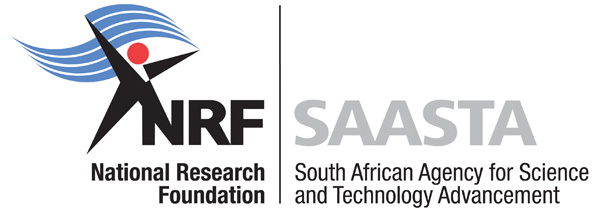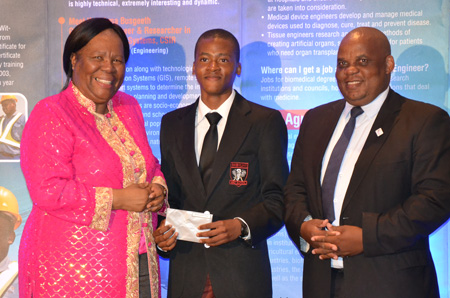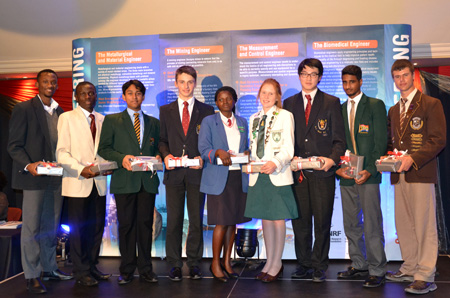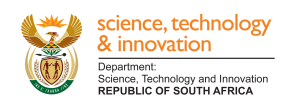All science promotion or awareness programmes within the NRF reside under three key strategic areas that combine to form an integrated and seamless approach.
Science Education
The aim of SAASTA’s Education Unit is to build the supply of tomorrow’s scientists and innovators.
South Africa is rapidly reaching the forefront of science and technology advancement in Africa and internationally, and has the potential to become a rich source of up-coming scientists, engineers and innovators.
Considering that South Africa was ranked very low in the 1993 and 1998/9 Trends in International Mathematics and Science Study, the work done by SAASTA’s Education Unit will be pivotal in preparing today’s youth to become tomorrow’s scientists and engineers.
This work can be divided into the following three broad areas:
- School science support, which includes educator and learner programmes; science enrichment projects; and competitions.
- SET careers, which exposes learners to career opportunities in science, engineering and technology.
- Science resources, which includes resources to support the school science curriculum; enrichment materials; web-based materials; and online learning.
Science Communication
The essence of good science communication lies in providing credible and accurate information that is accessible to all South African communities.
To achieve this, SAASTA’s communication unit utilises three critical processes:
- The scientific editorial process (which ensures that information is responsible, reliable and credible); and
- Scientific editing (which considers ethnicity and ethnology of target audiences, ensuring that messages are clearly communicated and understood).
- Audience analysis, with the intention to better understand South Africa’s diverse audience categories by measuring information needs and information seeking behaviour.
The unit has the following focus areas:
Science and the media
This includes media-scientist networking, events and the facilitation of workshops to assist media practitioners and scientists to popularise science.
Science promotion
This includes various communication tools and resources that are used to promote science to the general public, one of the best-known being SA Science Lens – South Africa’s only scientific photographic competition.
Science communication and capacity building
This includes developing the media and communication skills of researchers, enabling them to more effectively share their achievements in priority research areas.
Science Awareness
Science is often thought of as something that is abstract and generally out of reach for the average South African.
The main aim of SAASTA’s Science Awareness Platform is to literally put the world of science in society’s hands through exhibitions and through hands-on experience of science.
It provides science that the public can see, touch, feel and experience. In this way, science is demystified, is less foreign, becomes tangible and practical and, most of all, becomes fun.
The Science Awareness Platform achieves this through the following focus areas:
- Festivals and events such as INSITE, Science Unlimited, SciFest Africa, Sasol Techno-X and National Science Week.
- Science and Technology Centre Networks, i.e. human capacity development at science centres and other special programmes.
- Programmes such as in-reach, outreach and mobile programmes.
- Exhibitory, of which it does the design, fabrication, maintenance and outsourcing.
SAASTA occupies two sites, namely the Didacta Building in Pretoria that serves as its headquarters and the Observatory in Johannesburg.
The Johannesburg Observatory can host exhibitions on engineering, optics, astronomy, astrophysics and space science. Learning facilities include the infinity room, telescopes and the TRAC laboratory. The Johannesburg Observatory also has the following resources available or learners, educators and the public: forensic science laboratories; a computer laboratory; a library; several telescopes; 19 exhibits in the form of interactive hands-on models; and travelling exhibits such as SciQuest and StarLab.
SAASTA in action
Hamandishe Mathivha shares the spotlight with the Minister of Science and Technology, Naledi Pandor (left) and the Managing Director of SAASTA, Dr Jabu Nukeri. Mathivha received the award in recognition of his consistent top-drawer performances in the past three olympiads.
Top learners in Physical Science with the iPads they won during the 51st National Science Olympiad awards.
Sixty-five grade 11 and 12 learners from Lofentse Girls High School in Orlando, Soweto visited SAASTA’s Johannesburg Observatory on 28 May 2015 to learn more about career options in the fields of science, technology, engineering and innovation.
SAASTA National Schools Debate Competition 2015: The winning Western Cape team from De Kuilen High School.



 The South Africa Agency for Science and Technology Advancement (SAASTA) is a business unit of the
The South Africa Agency for Science and Technology Advancement (SAASTA) is a business unit of the 